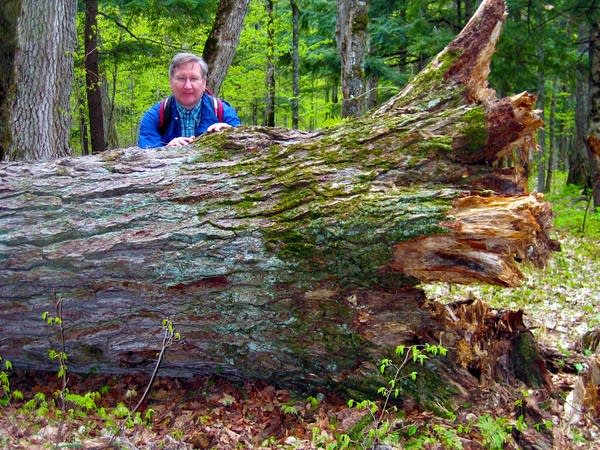Want to know whether the climate has warmed? Ask the trees
Go Deeper.
Create an account or log in to save stories.
Like this?
Thanks for liking this story! We have added it to a list of your favorite stories.

By Lee E. Frelich
Lee E. Frelich is director of the University of Minnesota Center for Forest Ecology.
This summer's heat wave, following the warmest winter on record and an exceptionally early spring, makes one wonder if we have reached the point where effects of global warming can be felt and seen on the landscape. I think so.
We have had warm winters and summer heat waves before. Warm and cool periods, dry and wet periods have always occurred and will continue to come and go. However, as time goes on they are superimposed on a systematic rise in temperature caused by the accumulation of carbon dioxide (CO2) and other heat-trapping gases in the atmosphere.
Turn Up Your Support
MPR News helps you turn down the noise and build shared understanding. Turn up your support for this public resource and keep trusted journalism accessible to all.
The role of CO2 in the atmosphere has a long and distinguished history in science. It was discovered to be a "greenhouse" gas by Joseph Fourier in the 1820s, and the first projections of how much doubling the CO2 content of the atmosphere would warm the lower atmosphere were published by Svante Arrhenius in 1896.
In the century since Arrhenius, scientists have added more sophisticated models to project future climates, and studied the combined impacts of multiple factors on climate. Natural cycles in temperature have been accounted for, allowing separation of the impacts of human-caused global warming. For example, every time a major volcano erupts, the climate is cooled for a few years by dust that filters out sunlight. Sunspots cause a slight rise and fall of mean atmospheric temperatures on a cycle of approximately 11 years, with only a tiny long-term trend in solar activity. La Nina-El Nino cycles also cause a slight cooling and warming of temperature.
However, we now have a systematic rise in temperature that can't be explained by natural influences, which is superimposed on natural climatic cycles.
Extreme rainfall events alternating with droughts are being enhanced by changing climate, and although we don't yet have a long enough period of observation to see whether there is an overall increase in severe weather events, there is some evidence that the occurrence of tornados and derechos has shifted farther north, so that Minnesota is seeing more of them regardless of whether the number for the entire country has increased. Because the natural system alternates among some amazing extremes even when the climate is not changing, a sudden switch to warm extremes, with the impacts of a warmer climate superimposed, can be quite spectacular, as we have seen in Minnesota in the last year.
Trees are a much better reader of climate than our weather instruments; they are exposed to the elements all day, every day. The droughts of recent years, alternating with heavy rains that supply more water than trees can use at one time; warm winters that actually allow the ground to get colder due to lack of insulating snow, and the record early spring of 2012 are registering their impacts on the forest.
Last week I visited friends at Lake Vermilion in northern Minnesota. In the boreal forest around the lake I saw red pines with browning crowns, a lack of balsam fir and black spruce regeneration, and rapidly expanding red maple, basswood and ironwood, tree species from the temperate deciduous forest to the south. I had not expected to see these changes so soon. But I realized they were happening faster than expected because of a warming climate's enhancement of natural extremes, combined with the chronic effects of slightly warmer temperatures all the time and other changes in the environment — such as a European earthworm invasion, which exaggerates droughts by stripping the forest floor of its insulating layer of leaf litter.
A lack of winter cold — January minimum temperatures in northern Minnesota have risen 8 degrees in the last 30 years — give the green light to maple and basswood to move north into territory where they would previously have been killed by extreme cold.
Nature has already worked out what the best trees are for a warmer climate. We just have to learn to read the clues. For example, in Kandiyohi County, in the middle of the prairie, a forest unique in the world — of rock, red and American elms, basswood, bur oak, hackberry, and Kentucky coffee-tree — is already adapted to the relatively warm and dry climate that will in a few decades extend throughout northern Minnesota. This forest is an ecological blueprint for forests adapted to a warm climate.
It is an interesting time to be a forest ecologist in Minnesota, a place where huge climate-related transformations have begun to occur. Whether you think climate change is good or bad, one thing is certain — the science of climate change and ecosystem response to it are fascinating.



